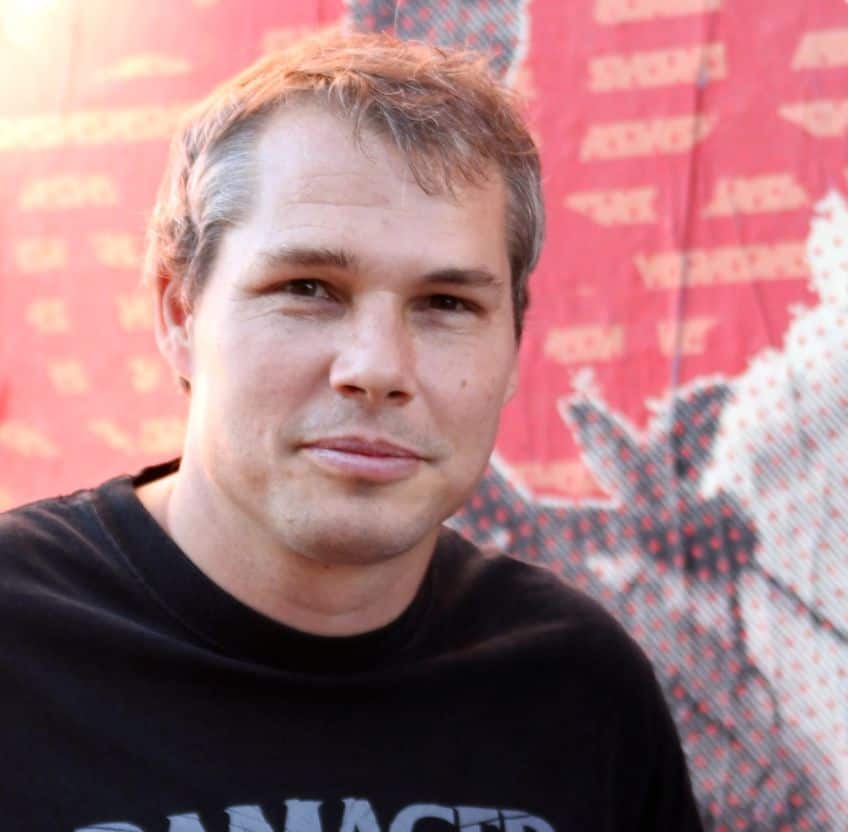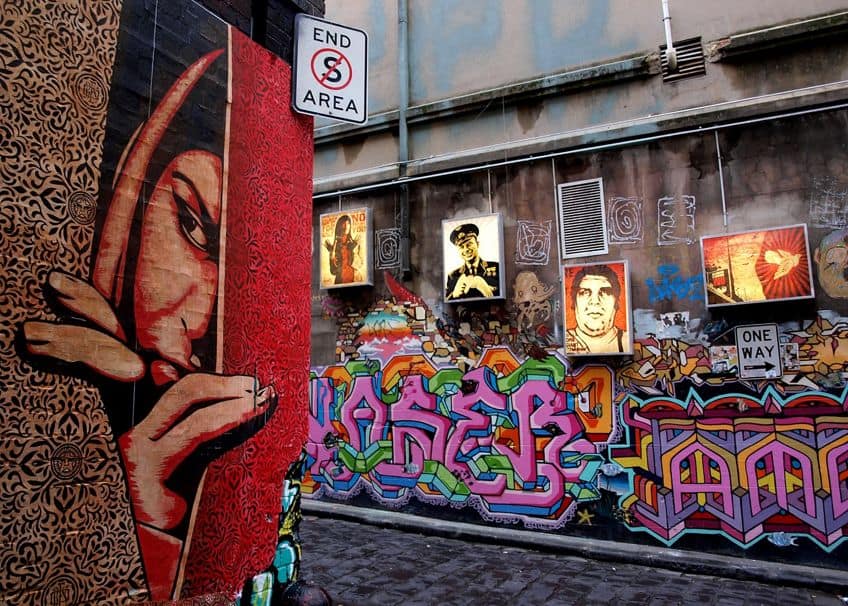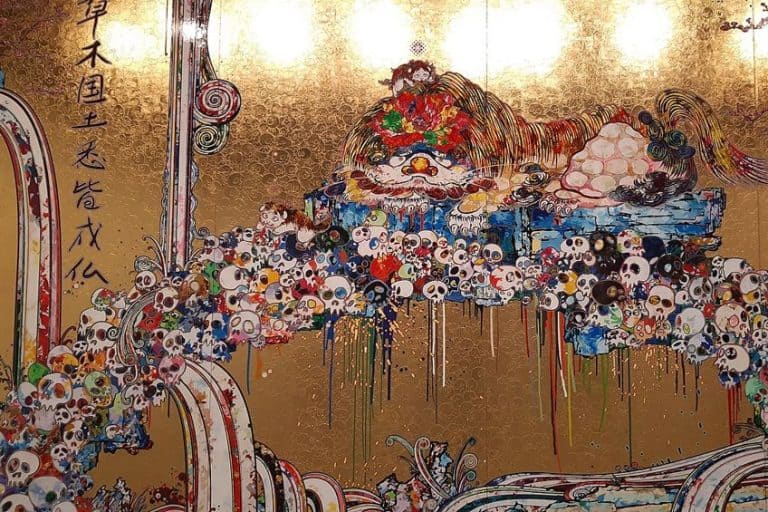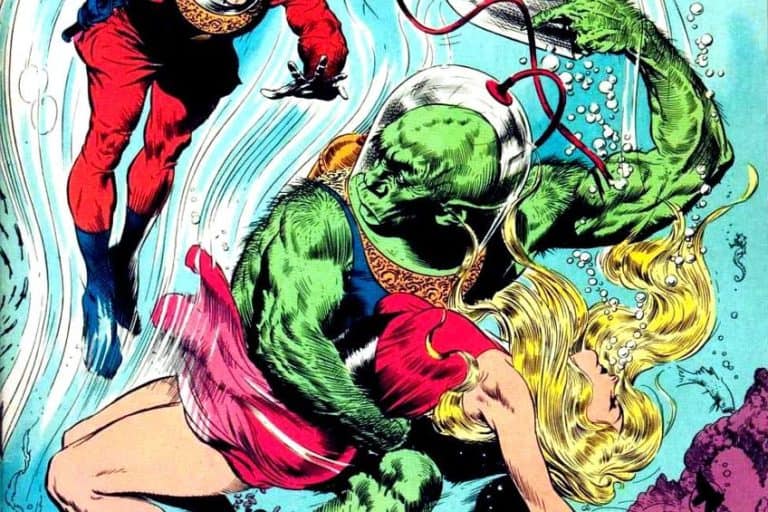Shepard Fairey – The Graphic Art of Shepard Fairey
Shepard Fairey, regarded as one of the most prominent and well-known street artists, played a significant role in the creation and growth of modern urban art. Shepard Fairey’s artworks are prolific and have reached a worldwide audience, creating international cultural movements since he emerged from the skateboarding culture in the early 1990s. Shepard Fairey’s artworks, such as his stickers, posters, and murals are a mix of satire, subversion, and protest that aim to blur the lines between commercial and traditional art. At the same time, they express concern about public space and rules and expectations. This article will examine Shepard Fairey’s biography and art.
Shepard Fairey’s Biography
| Artist Name | Shepard Fairey |
| Nationality | American |
| Date of Birth | 15 February 1970 |
| Date of Death | Present |
| Place of Birth | Charleston, South Carolina, United States |
Shepard Fairey has also earned a name for himself as a graphic designer in both the commercial and political realms, with his graphic art appearing in a number of high-profile projects. Fairey is a committed environmental and political activist, and many of his artworks promote awareness and change in a variety of issues ranging from gun regulation to global warming. Many of his poster designs are available for free on his webpage and through other platforms, allowing protestors and other activists to utilize them to oppose the status quo.

Childhood
Shepard was an artist from a young age, yet he felt limited by his traditional surroundings. He stated: “My mother was the head cheerleader of her school, and my father was the team captain of the football team. I attended a conservative school and was miserable, but I didn’t know why until I found punk rock and the skateboarding culture, these anti-mainstream, anti-conformist groups that provided me with a channel for my creativity that I had never previously experienced”. He met his friends at the local private school Porter-Gaud. According to Fairey, they were not the really cool bunch, and we were not the geeky group either.
Yet, it was the type of “preppy” school where students would make fun of you if you wore the “wrong” clothing.
As a youngster, he was hard to deal with and manage; as his mother put it, “he moved to the beat of a different drummer”, so upon deciding that he wanted to pursue a career in art, his parents consented and sent him to an art school. He moved from “trying to study 14 minutes every day to making art 14 hours a day” overnight. In 1988, he graduated from the Idyllwild Arts Academy in Palm Springs, and in 1992, he received a B.F.A for illustration from the Rhode Island School of Design. In addition to his studies, he designed and sold skateboards and T-shirts.
Early Training
During his time at RISD, he started to experiment with sticker stencils, which would define his career. He said that sketching was not regarded as cool in the culture and that there were no cutting-edge art galleries. Doing stickers and stencils was really freeing for him since teenagers don’t really care about art galleries. He felt he was at least forging his own way, which seemed like he was accomplishing something new, at least. He went out in the middle of the night with his stickers, putting them on the walls and signposts of Providence and New York.

He had trouble paying the bills after graduating, with his parents always on his back to find a real job. His stickers, on the other hand, began to catch on and he was motivated to open his own screen-printing shop, which quickly became a sensation. In 1995, he coined the phrase “Obey,” which was prompted by the B-movie They Live. It was meant to make people think about how they acted, the preconceptions they had, and how they spent their money. It has subsequently become a symbol of nonconformity.
Mature Period
Fairey attributes his tenacity and inspiration, at least partly, to the fact that he has type 1 diabetes. He spends more time pondering the purpose of life since he believes he will live 20 years less than the average person. The condition has impaired his vision, requiring eye surgeries and temporary blindness which continuously pushes him to create art while he still can. He spent the late 1990s in San Diego, where he co-founded and operated a graphic art design business focusing on guerrilla marketing alongside Philip DeWolff and David Kinsey and this is where he met his wife Amanda. They traveled the world together, her looking out for cops while he covered Tokyo, San Francisco, and Hong Kong with stickers and posters. Not only did he ascend tall skyscrapers and billboards to find the most suitable spot for his art, but he was also arrested several times.
Fairey described his experiences as extremely unpleasant, citing being refused a drink, being barred from using the restroom, being prohibited from making a phone call, and having his handcuffs fastened on unreasonably tightly as examples.
Most significantly, he has been refused insulin while in jail, which is potentially life-threatening to anyone with his condition. Fairey and his wife founded their own graphic art company, Studio Number One, in 2003, and welcomed their first daughter in 2005, followed by another two years later. Fairey stated that having children caused him to reconsider the leadership under which they would grow up, and in 2008 he earned widespread recognition with the poster Hope, which he drew for the Obama campaign.
It was subsequently regarded as the most successful political poster in American history. He held his debut solo museum exhibit the following year at the Boston Institute of Contemporary Arts. Nevertheless, as he was ready to attend the preview of his exhibition, he was detained on two previous warrants for property damage due to his graffiti. He suddenly went from having his first major solo exhibit, with his poster of Obama up in the National Portrait Gallery, to getting arrested in Boston in a matter of days. After admitting guilt to one count of defacing property, he received two years’ probation, and 11 other charges were withdrawn.

Fairey’s arrest was complicated by the reality that he was in a copyright battle with the Associated Press at the time. He produced the Hope poster picture from a photograph he acquired online, claiming that he had changed it sufficiently to qualify for fair use of the original material. The Associated Press and the professional photographer who captured it, Mannie Garcia, both disagreed. Fairey’s case was compounded by the fact that he reportedly misidentified which image he had originally used and then destroyed files on his pc in an attempt at covering up his tracks. While the initial lawsuit was resolved out of court with the specifics kept private, Fairey was charged with deleting and forging documents during the original legal struggle in 2012.
He pled guilty to criminal contempt and was sentenced to two years’ probation in addition to a $25,000 fine. Dealing with the matter in Boston was extremely distressing for the artist and his small family. He was on the point of a nervous collapse as a result of it. Then there was the other case, and he was completely overwhelmed. Things eventually improved, and in 2010, curator and art dealer Jeffrey Deitch commissioned Fairey to produce an exhibition on America, incorporating counterculture and political heroes of the period.
When May Day debuted on New York’s Wooster Street, people waited in line for hours to get in.
Later Developments
Fairey has also been a dedicated activist over his career, criticizing the Iraq War and joining the Occupy Wall Street movement, as well as environmental conservation. For the Paris Climate Conference in 2015, he projected a three-dimensional display on the Eiffel Tower onto a huge globe that was positioned between the tower’s first and second stories. Fairey stated that he was proud to be the first artist in history to accomplish this feat. It was uncommon for spectacle, entertainment value, and serious material to converge and it was gaining attention in a beautiful setting.

He found it highly valuable that art could serve as a symbol or a beginning point for a dialogue. Fairey has contributed the profits from his artwork to several causes, and he has also created three anti-Trump campaign posters. These were used in women’s protests across the world, with minority women as their subjects. While Fairey was a big supporter of Obama, he has avoided explicitly criticizing Trump’s policies, whom he views as the worst president the United States has ever had. Instead, he used his work to investigate the issues.
He addresses the root causes of sexism, racism, xenophobia, environmental damage, and climate change.
He sees Trump as a symptom, yet he’d rather speak to individuals in a manner that isn’t party politics, but instead whose side of history they want to end up on. Fairey’s diverse portfolio has made him a divisive figure in some circles. Several members of the urban art community have criticized him for his commercial ventures, which they perceive as the artist “selling out”. On the other side, he has been chastised for directing his efforts towards public locations. As a result, he was prosecuted in 2018 as part of Detroit Mayor Mike Duggan’s strong crackdown on graffiti and unlawful street art, but the case was eventually dropped.
The Legacy of Shepard Fairey’s Artworks
Shepard Fairey’s artwork was first seen as a sort of underground, countercultural manifestation that defied popular ideals and standards when it first appeared in the 1990s. His Obey Giant campaign, which depicted a stylized portrait of wrestler Andre the Giant, was first intended to be a reflection on the pervasiveness of advertising in urban environments, but it eventually became a representation of opposition and rebellion. Fairey’s art is now well-known and appreciated, with his designs featuring on everything from record covers to murals and t-shirts.

Shepard Fairey remains an influential presence in the street art and graphic art design industries. Fairey has had a huge effect on other artists, with numerous street artists and graphic artists acknowledging him as a significant source of inspiration for their works. His use of strong, graphic images and political statements has become a signature of contemporary street art, and his art has helped promote and popularize the genre.
That concludes our look at Shepard Fairey’s biography and the influence of his art. Fairey’s Hope artwork became the most iconic poster of the 2008 election and a representation of change. Nonetheless, it sparked much debate, with Fairey being accused of unauthorized use of copyrighted material. Yet, despite this, and many other setbacks experienced during his life, he has managed to become one of the most highly respected street artists of the style’s history.
Frequently Asked Questions
What Is Shepard Fairey’s Art Style?
Fairey’s art style is highly influenced by 1970s and 1980s punk and DIY movements, as well as the visual design of Soviet propaganda posters. His work is frequently regarded as a sort of cultural critique, questioning the function of the arts and politics in society and challenging dominant ideals and standards. Shepard Fairey’s art style is distinguished by the use of brightly colored images, as well as political statements. In several of his works, he uses a limited color palette of black, red, and white. Fairey’s designs are often made using a combination of screen printing, stenciling, and collage processes, with found items and pictures regularly included in his work.
What Graphic Art Design Work Does Shepard Fairey Do?
As a graphic artist, he creates a large variety of different media, such as street art, screen prints, posters, record covers, and clothes. He uses stencils in his work, since they make it simple and quick to produce several copies of a design. A few of Fairey’s most well-known graphic design projects include the campaign poster, which portrays a stylized depiction of wrestler Andre the Giant, and the famous poster he made in support of Barack Obama’s 2008 reelection campaign.
Isabella studied at the University of Cape Town in South Africa and graduated with a Bachelor of Arts majoring in English Literature & Language and Psychology. Throughout her undergraduate years, she took Art History as an additional subject and absolutely loved it. Building on from her art history knowledge that began in high school, art has always been a particular area of fascination for her. From learning about artworks previously unknown to her, or sharpening her existing understanding of specific works, the ability to continue learning within this interesting sphere excites her greatly.
Her focal points of interest in art history encompass profiling specific artists and art movements, as it is these areas where she is able to really dig deep into the rich narrative of the art world. Additionally, she particularly enjoys exploring the different artistic styles of the 20th century, as well as the important impact that female artists have had on the development of art history.
Learn more about Isabella Meyer and the Art in Context Team.
Cite this Article
Isabella, Meyer, “Shepard Fairey – The Graphic Art of Shepard Fairey.” Art in Context. February 1, 2024. URL: https://artincontext.org/shepard-fairey/
Meyer, I. (2024, 1 February). Shepard Fairey – The Graphic Art of Shepard Fairey. Art in Context. https://artincontext.org/shepard-fairey/
Meyer, Isabella. “Shepard Fairey – The Graphic Art of Shepard Fairey.” Art in Context, February 1, 2024. https://artincontext.org/shepard-fairey/.










